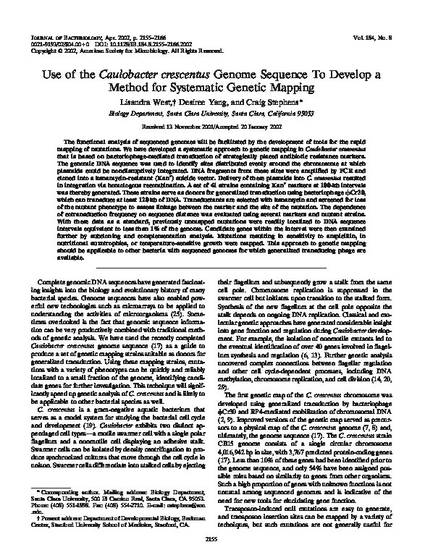
The functional analysis of sequenced genomes will be facilitated by the development of tools for the rapid mapping of mutations. We have developed a systematic approach to genetic mapping in Caulobacter crescentus that is based on bacteriophage-mediated transduction of strategically placed antibiotic resistance markers. The genomic DNA sequence was used to identify sites distributed evenly around the chromosome at which plasmids could be nondisruptively integrated. DNA fragments from these sites were amplified by PCR and cloned into a kanamycin-resistant (Kanr) suicide vector. Delivery of these plasmids into C. crescentus resulted in integration via homologous recombination. A set of 41 strains containing Kanr markers at 100-kb intervals was thereby generated. These strains serve as donors for generalized transduction using bacteriophage Cr30, which can transduce at least 120 kb of DNA. Transductants are selected with kanamycin and screened for loss of the mutant phenotype to assess linkage between the marker and the site of the mutation. The dependence of cotransduction frequency on sequence distance was evaluated using several markers and mutant strains. With these data as a standard, previously unmapped mutations were readily localized to DNA sequence intervals equivalent to less than 1% of the genome. Candidate genes within the interval were then examined further by subcloning and complementation analysis. Mutations resulting in sensitivity to ampicillin, in nutritional auxotrophies, or temperature-sensitive growth were mapped. This approach to genetic mapping should be applicable to other bacteria with sequenced genomes for which generalized transducing phage are available.
